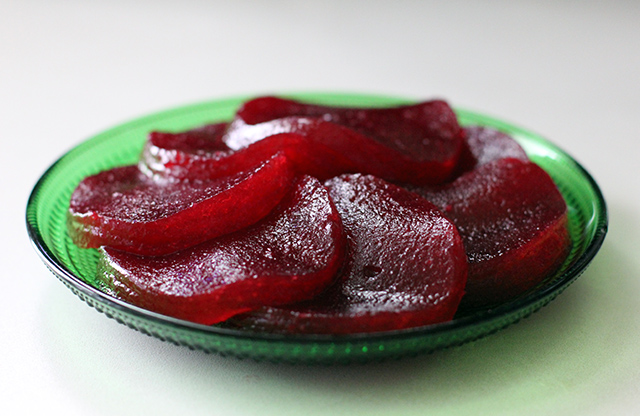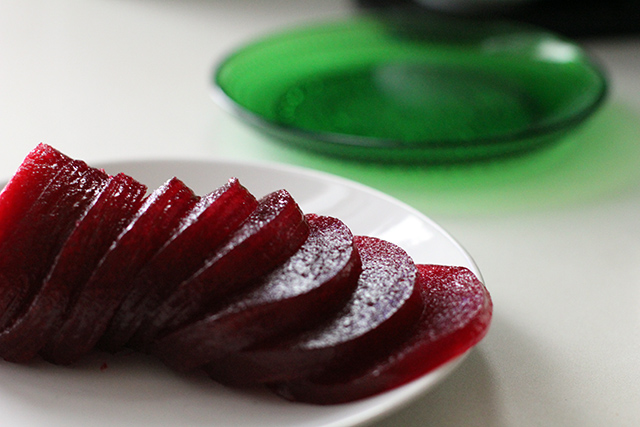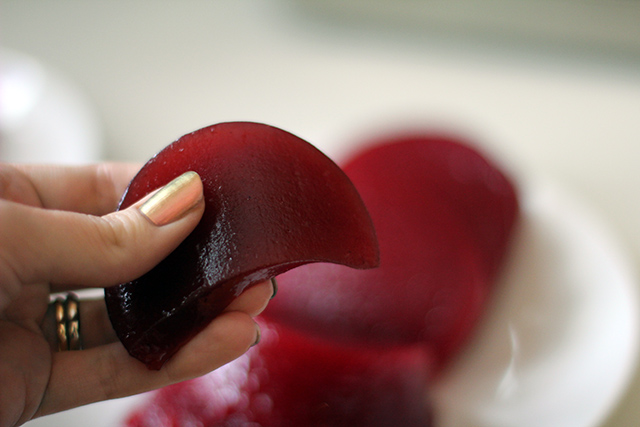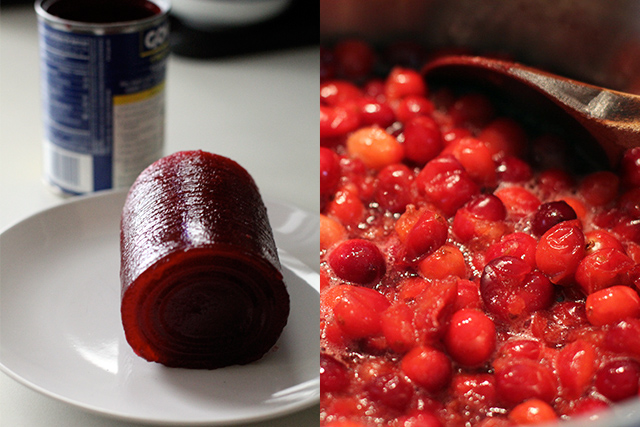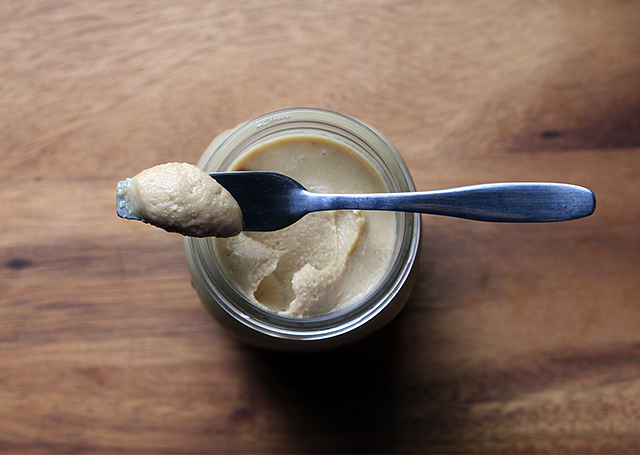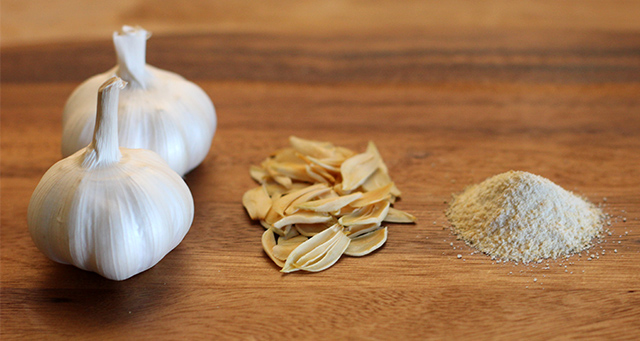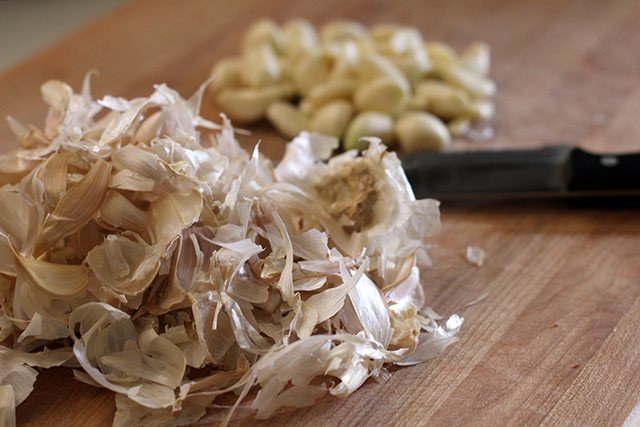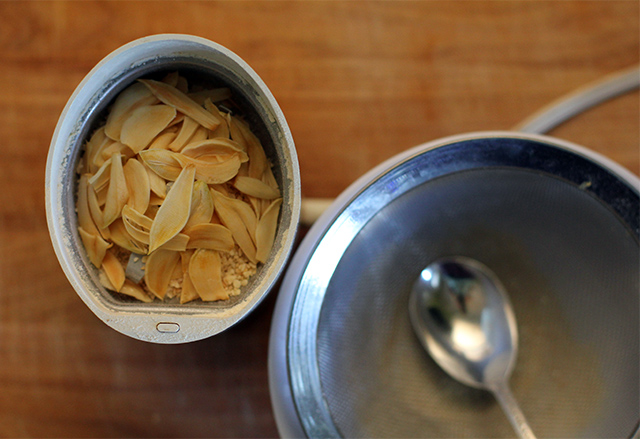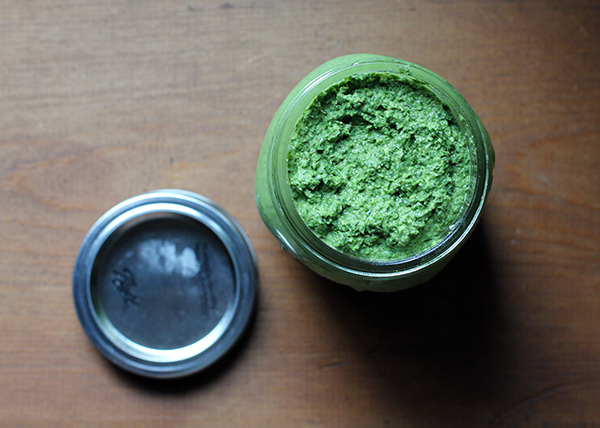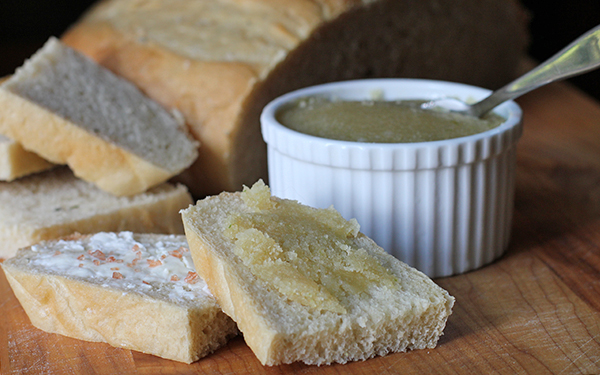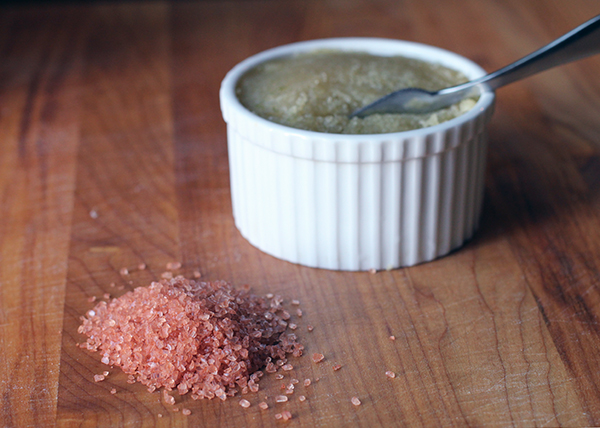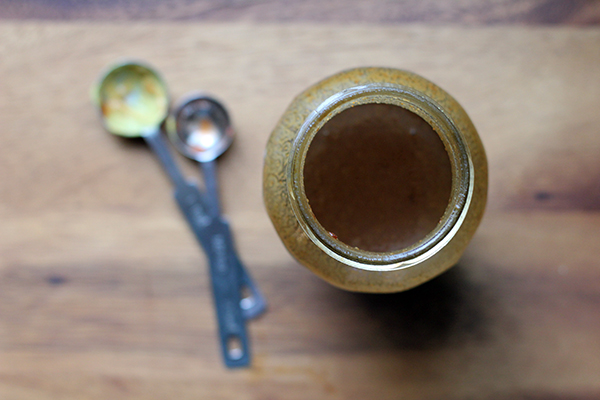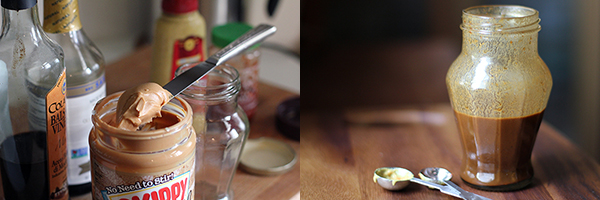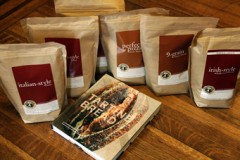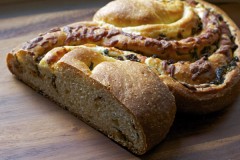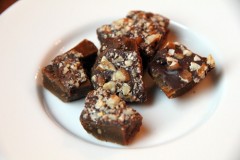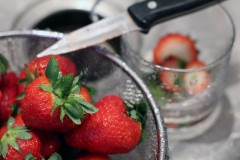I grew up in a household of “normal” American cuisine: our mac and cheese was boxed, our casserole was tuna, and our cranberry sauce? Our cranberry sauce had ridges running along the side–the mark of the can it came from. Since traveling out in the world, I have of course since been introduced to homemade, gourmet, and small-batch artisan versions of a lot of foods, but some attachments die hard. And sometimes, well, sometimes on balance boxed is just best.
This brings me around to how I decided that DIY canned cranberry sauce would be my “heart healthy” project for Cathy’s annual Thanksgiving round-up. Granted, cranberry sauce is always going to have a bit of sweetener in it to balance the tartness of the berries, but I figured if I could get the high fructose corn syrup and the plain old regular corn syrup out of the equation, we were still making strides toward a product that did the body a little better if not entirely good.
For my recipe, I decided to use fruit juice and honey as my sweeteners. Though research had told me that using white sugar would require no additional pectin to get a good set, by using honey, I also needed to add this step. This finished jelly does differ from the commercial version in that you can definitely detect that honey was used. I like this–the sauce isn’t muddled with extra spices or exotic flavorings, but it is just a little more complex. White sugar would likely get you closer to the commercial taste, however, if that’s what you’re going for.
Since I had already purchased a can of jellied cranberry sauce for comparison’s sake–for a $1, mind you, so add that into your considerations–I also had the bright idea that I would use the can as my mold, thereby silencing any readers or relatives who just could not deal with a cranberry sauce unmarked by rings along the edge. I thought I was being incredibly clever until I found out a couple of minutes ago that Marisa over at Food in Jars totally did that last year. BPA-free to boot.
What I discovered about my DIY cranberry sauce, however, is that while it is firm enough to be sliced and handled, it doesn’t come close to the commercial jelly in the can. Truly, that product has an almost terrifyingly firm yet not chewy in the mouth consistency. I’m not sure how they manage it! I did get my jelly out of the can without incident, but as a frazzled holiday host, make sure to take a deep breath and steady your hands before you cut and plate your sauce in those perfect circular slices–otherwise it could quickly turn into a fool’s game laced with profanities.
DIY Jellied Cranberry Sauce (Ridges Optional)
12 ounces whole cranberries, washed and picked over, mushy berries removed
3/4 cup water or juice (I used a tart grape juice I had on hand to good effect. I suspect apple or orange would be nice compliments as well.)
3/4 cup honey
Pectin–I used Pomona’s (2 teaspoons calcium water and 2 teaspoons pectin powder)
Put the juice in a heavy-bottomed soup pot and bring to a boil. Add berries and cook, stirring occasionally, just until most of the berries have popped and begun to soften (about five minutes). Remove from heat.
Using a food mill (recommended) or a sieve and the back of a ladle, mash the softened fruit through the strainer leaving the peels behind. Discard the peels and return the strained fruit to a clean pot. Add the calcium water to the fruit.
Stir the pectin powder into the measured honey, mixing well to evenly combine, then add this mixure to the fruit in the pot. Bring to a boil and cook, stirring constantly, for one minute.
Pour the sauce into the mold of your choice and allow to cool undisturbed until set. Turn out onto the serving dish of your choice just before serving.

